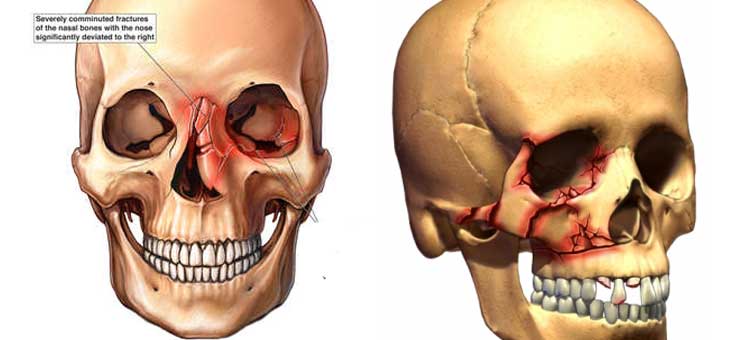
DESCRIPTION
- Trauma surgery is a surgical specialty that utilizes both operative and non-operative management to treat traumatic injuries, typically in an acute setting.
- Treatment is cause-related, but also symptomatic if the underlying cause is unknown or not correctable. It is also important to note that most ulcers will heal completely without any intervention. Treatment can range from simply smoothing or removing a local cause of trauma, to address underlying factors such as dry mouth or substituting a problem medication.
- Over the last few decades, a large number of advances in trauma treatment and critical care have led to an increasing frequency of non-operative care for injuries to the neck, chest, and abdomen. Most injuries requiring operative treatment are musculoskeletal. The field combining trauma surgery in Pune and emergency surgery is often called acute care surgery.
Oral Intraoral palpation of zygomatic arch to distinguish bone from soft tissue injury Mandible Fracture Place finger in auditory canal while patient opens and closes jaw to detect condyle fracture Tongue blade test 95% Sn for no fracture if can bite down hard enough to break it when twisted by examiner Jaw deviation due to mandible dislocation of condyle fracture Chin will point away from dislocation, towards a fracture Malocclusion occurs in mandible, zygomatic, and Le Fort fractures Lacerations and mucosal ecchymosis suggests mandible fracture.
Cause :-
Injury mechanisms such as falls, assaults, sports injuries, and vehicle crashes are common causes of facial trauma in children as well as adults.are a common cause of facial injury.Facial trauma can also result from wartime injuries such as gunshots and blasts. Animal attacks and work-related injuries such as industrial accidents are other causes.
Diagnosis :-
Radiography, imaging of tissues using X-rays, is used to rule out facial fractures.can be used to locate the source of bleeding.However the complex bones and tissues of the face can make it difficult to interpret plain radiographs; CT scanning is better for detecting fractures and examining soft tissues, and is often neede







